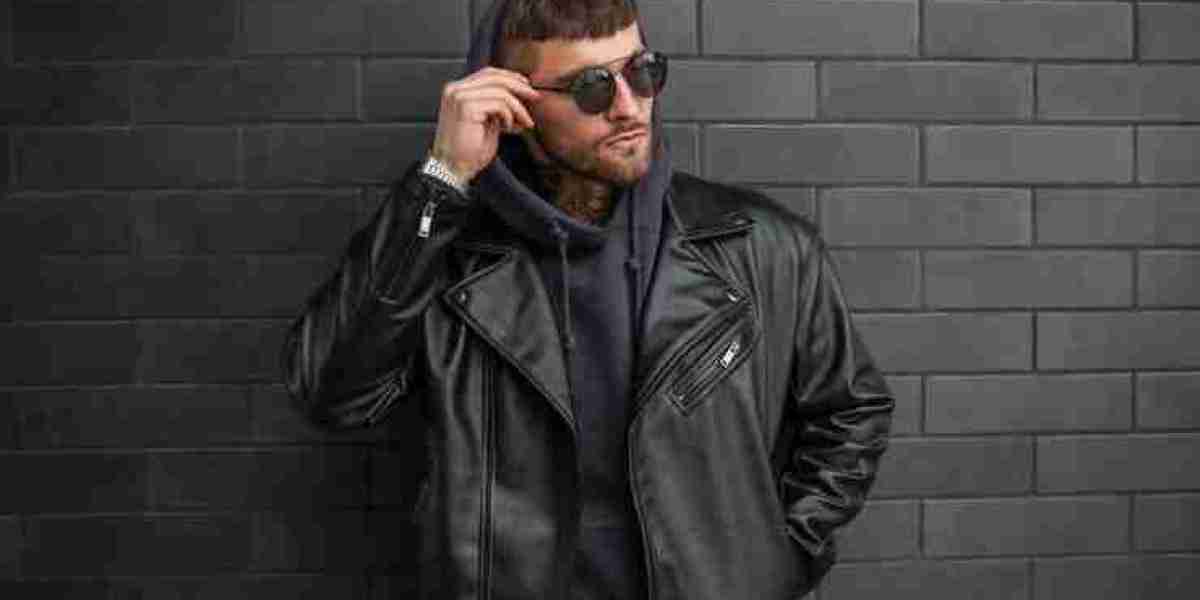The motorcycle jacket represents far more than a simple piece of protective gear—it stands as a sophisticated integration of technology, safety engineering, and personal expression. This essential garment has evolved from basic weather protection to a highly specialized piece of safety equipment that can mean the difference between walking away from an accident and sustaining serious injury. The modern motorcycle jacket combines advanced materials, intelligent design, and ergonomic considerations to create a protective shell that serves riders across all disciplines and conditions.
Historical Evolution and Cultural Transformation
The motorcycle jacket's origins date back to the early twentieth century when riders began adapting existing leather garments for motorcycling use. Early motorcycle enthusiasts recognized that thick leather provided protection from wind, rain, and road debris long before specialized riding gear existed. The iconic design that would become synonymous with motorcycle culture emerged following World War II, when surplus military and aviation leather jackets were repurposed by riders seeking both protection and a distinctive appearance.
The cultural significance of the motorcycle jacket expanded dramatically during the mid-twentieth century as it became associated with rebellion and counterculture movements. Hollywood films featured charismatic anti-heroes clad in leather jackets, cementing the garment's image as a symbol of independence and nonconformity. Simultaneously, the jacket was adopted by various subcultures and musical movements, each adding their own modifications and meanings to the garment. Despite these cultural associations, the practical protective qualities remained the jacket's primary purpose for serious riders, leading to continuous technical improvements.
Advanced Materials and Protective Technologies
Contemporary motorcycle jackets incorporate materials that provide significantly superior protection compared to historical designs. Traditional leather remains valued for its exceptional abrasion resistance, with different animal hides offering varying characteristics. Thick cowhide delivers maximum durability, while goatskin and kangaroo leather provide improved flexibility and reduced weight. Technological advancements have introduced synthetic materials that match or exceed leather's protective qualities while offering advantages in weather resistance, weight reduction, and ventilation properties.
The integration of specialized impact protection represents one of the most significant safety advancements in modern motorcycle jackets. Current designs feature strategically placed armor at critical impact zones including shoulders, elbows, and spinal areas. These protective inserts utilize various energy-absorbing materials that dissipate force upon impact. Some advanced systems employ reactive materials that remain flexible during normal use but instantly harden upon impact, providing protection without compromising comfort. The quality and coverage of this armor significantly influence the jacket's protective capabilities, with premium options offering more comprehensive protection and superior energy absorption.
Climate Adaptation and Weather Protection
Effective motorcycle jackets provide sophisticated solutions for managing diverse weather conditions. Waterproof membranes and treatments prevent rainwater penetration while allowing moisture vapor from perspiration to escape, maintaining comfort during extended rides. Insulating layers provide warmth in cold conditions, with advanced synthetic insulations offering excellent heat retention without excessive bulk. Many systems feature removable liners that allow riders to adapt their jacket to changing temperatures throughout the day or during longer journeys.
Ventilation represents another critical aspect of weather protection, particularly for riding in warm conditions. Strategic vent placement allows air to flow through the jacket while maintaining structural integrity and protection. Zippered vents in the chest, back, and arms can be opened to increase airflow during low-speed riding or closed to maintain warmth at higher speeds. Some jackets incorporate channeled ventilation systems that actively direct air through the garment, enhancing evaporative cooling. This attention to climate control ensures riders can maintain comfort across various weather conditions without compromising protection.
Ergonomic Design and Functional Features
The practical design of motorcycle jackets includes numerous features that enhance both safety and convenience during riding. Abrasion-resistant materials in high-impact areas provide additional protection where it's most needed. Reinforced stitching and double-layered panels in critical zones ensure the jacket maintains its integrity during a slide. Adjustable closures at the wrists, waist, and neck allow for a secure fit that prevents flapping in the wind and ensures protective elements remain properly positioned during riding.
Storage solutions in motorcycle jackets balance accessibility with security and aerodynamic efficiency. Multiple pocket configurations provide space for essential items while maintaining the jacket's streamlined profile. Water-resistant pockets protect electronics and important documents, while internal secure pockets offer protected storage for valuables. Some jackets incorporate specialized pockets designed specifically for communication devices or hydration systems. Enhanced visibility features including reflective elements and bright color options provide additional safety during low-light conditions, making riders more conspicuous to other road users.
Fit Considerations and Comfort Engineering
Proper fit represents one of the most critical aspects of motorcycle jacket performance and safety. A well-fitting jacket ensures protective elements remain correctly positioned during normal riding and maintains its protective integrity in the event of an accident. The ergonomic cut of quality motorcycle jackets accounts for the riding position, with pre-curved arms and extended back length that prevents riding up when leaning forward. Adjustable systems allow riders to customize the fit for their specific body type and riding style, ensuring both comfort and proper protection.
Comfort considerations extend beyond basic fit to include range of motion and overall wearability. Flexible panels and strategic patterning allow freedom of movement for controlling the motorcycle without constriction. Advanced liner materials manage moisture and provide comfort against the skin, while carefully placed seams prevent chafing during extended wear. The weight distribution and overall feel of the jacket contribute to reducing rider fatigue, making longer journeys more comfortable and enjoyable. These ergonomic considerations ensure that riders will consistently wear their protective gear rather than compromising safety for comfort.
Specialized Designs for Riding Disciplines
The diversity of motorcycle riding has led to the development of specialized jacket types tailored to specific disciplines and conditions. Sport riding jackets emphasize aerodynamic efficiency, maximum protection, and integration with other protective gear. Touring jackets prioritize comfort, weather protection, and storage capacity for long-distance travel. Adventure riding designs offer versatility for changing conditions and riding positions, often featuring additional adjustment points and more durable materials. Urban commuting jackets balance protection with casual appearance for everyday wear, often incorporating more discreet armor and streamlined designs.
Style considerations, while secondary to protection, play an important role in rider acceptance and consistent usage. The aesthetic diversity available in modern motorcycle jackets allows riders to express personal style while maintaining safety standards. From classic retro designs that recall motorcycling's golden age to modern technical appearances featuring bold graphics and innovative materials, the visual aspect of motorcycle jackets continues to evolve while maintaining their protective purpose. This variety ensures that riders can find jackets that meet their safety requirements while aligning with their personal aesthetic preferences and riding needs.
Maintenance Protocols and Long-Term Care
Proper maintenance extends the functional life of motorcycle jackets and ensures consistent protection throughout their service life. Cleaning requirements vary significantly between materials, with leather needing different care than synthetic textiles. Conditioning treatments maintain leather's flexibility and water resistance, while technical fabrics require specific cleaning products that preserve their protective treatments and breathable membranes. Regular inspection of seams, closures, and protective elements identifies wear before it compromises safety, allowing for timely repairs or replacement.
Storage considerations significantly affect the jacket's longevity and ongoing performance. Proper hanging maintains the jacket's shape and prevents creasing that could weaken materials over time. Climate-controlled storage prevents mold growth and material degradation, particularly for natural materials like leather. The replacement of impact armor following manufacturer guidelines ensures continued protection, as these materials can degrade over time even without visible damage. This ongoing maintenance represents an important aspect of responsible motorcycle ownership and personal protection, ensuring that the jacket performs as intended when needed most.
The motorcycle jacket continues to evolve as new materials and technologies emerge, but its fundamental purpose remains unchanged. It serves as the rider's primary upper body protection, balancing safety, comfort, and style in a garment that has become synonymous with the motorcycling experience. From its practical beginnings to its current high-tech iterations, the motorcycle jacket remains an essential piece of equipment that reflects both the risks and rewards of life on two wheels, representing the intersection of personal freedom and responsible riding practices.






